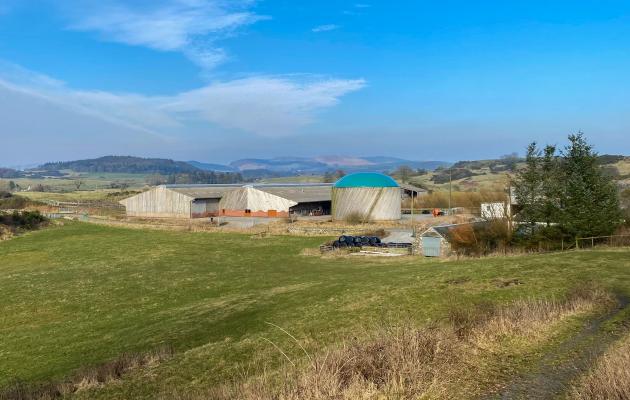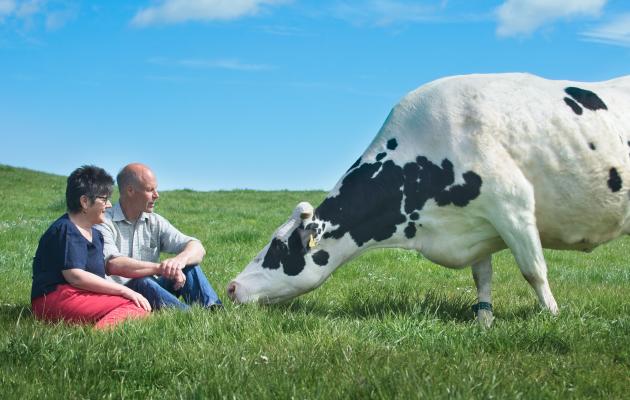
Biodiversity at Rainton Farm
Increasing biodiversity on our farm has been a priority for us for the last 20 years, when we transitioned to organic and planted 35,000 mixed broadleaf trees. This transition saw the return of farming practices which benefit wildlife rather than threaten it. We can see, every day, the difference that prioritising biodiversity has made.
Our planted hedgerows and well maintained dykes provide a haven for wildlife. We no longer use pesticides or herbicides so wildflowers thrive in our pastures and offer safe refuge to countless bumblebees, dragonflies and butterflies, and our native woodland provides safe habitat for the endangered and iconic red squirrel.
Our farm is teeming with life and we have worked with environmental organisations to record and document the species that are found on our farm. So far 341 species have been recorded on our farm. Recorded birds include Yellowhammer, Barn Owl, Tree Sparrow and Skylark; flora and fauna such as Common Spotted Orchid and Sun Spurge; mammals like Red Squirrels, Red Deer and Otter; butterflies like Northern Brown Argus and Wall; an abundance of insects, like the Blue Tailed Damselfly and Green Dock Beetle; reptiles including Adders and Common Lizards; Common Toads, Frogs and Newts make great use of our wildlife ponds and there’s a whole host of fungi, from Birch Polypore to the delicate Pale Brittlestem mushroom.
Following those species surveys two large areas of our farm were designated as Local Wildlife Sites. This is a nationally recognised designation for areas of land that are especially important for wildlife.
An Example: Dandelion
This spring there was a very pronounced golden glow across our pastures. In the good-ol’-bad-ol’ days before we went organic, most of our fields got a regular spray of herbicide to kill perennial weeds like docks, nettles and thistles. We hardly saw a dandelion except on the roadside verges.
As dandelions started to invade our grasslands years ago I was at first a little concerned that this plant might be harmful to productivity, but now I’ve come to the opposite conclusion; its presence is more than welcome. In our grazed fields it has got to a moderate level and, having found its natural balance point, stopped there. In our silage fields, management of the fields has very much tipped things in the dandelion’s favour.
We used to spray and fertilise these fields which stimulated earlier and faster grass growth, allowing us to mow them for silage in the 3rd or 4th week of May. Any dandelions that managed to survive the chemical onslaught were about to set seed at this point but they would be swept up in the forager and stuffed into the silage pit for winter feed.
But now, we don’t use any of the chemicals, we don’t plough the fields anymore and we mow our silage a couple of weeks later giving the dandelions time to grow, flower and set seed. You’ll see from the photo how many of them there are – millions! Don’t they smother out the grass? From the amount of silage we harvest, it seems not. In fact silage yields are now about as good as they were when we were applying all that toxic stuff. Not only that but the dandelion greenery, which is harvested along with the grasses and other herbs in out silage pastures, is rich in vitamins A, C and K and minerals calcium, potassium, iron and manganese.
And if that wasn’t enough, the thick tap root of the dandelion burrows deep into the soil mining these nutrients and opening the soil up to allow air and water to get in and feed the soil biome, building soil biodiversity and locking up carbon. The flowers provide an early source of nectar for pollinating insects, and the seeds provide early season food for small birds. What’s not to like? The big question is, ‘can we get too much of a good thing?’ What I’ve learned over the 20-plus years of biodiversity focused farming is that, given time, nature usually brings things back into balance.
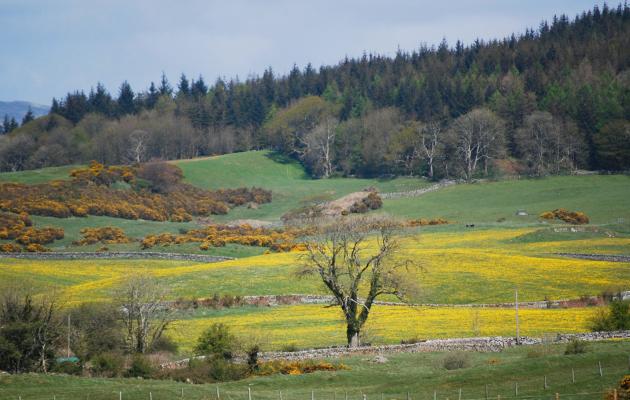
Biodiversity Building & Soil Building
We haven’t actually been measuring biodiversity changes on the farm, as such, but there have been pretty dramatic improvements. The diversity in the pastures is remarkable. Many of the herbs we now see commonly were previously killed by the herbicides we had used to reduce thistles, nettles and docks.
On the cow pats, there are 5 types of fly and 2 types of beetle rapidly colonising, burrowing and incorporating cow pat material into the soil. The parasite drenches we previously used on our cattle kill these insects or their larvae, breaking the nutrient and carbon cycles. I used to panic about the farm becoming infested with difficult to control docks, but I needn’t have worried as the Green Dock Beetles and their larvae are having a devastating effect on the docks, keeping them in check – nature keeping everything balanced.
This is why high biodiversity matters. It does take time, but when you work with nature rather than against it, nature works for you and it works for the planet too.
Recently we uncovered historic soil data that had been locked away in the James Hutton Institute’s vaults in Dundee. The soil samples were collected from thousands of sample points from all over the farm, excluding the woodlands, over the 25 years as we transitioned firstly to organic then to regenerative farming. While there was variation up and down over the years the overall trend of the soil organic matter for the farm was upwards.
Soil organic matter is a crude measure of the health of the soil. In soils that have had crops grown on them year after year, the soil organic matter levels are in the order of 1 or 2 percent, they’re pretty well burned out. Roughly 68% of soil organic matter is carbon, so if your soils are increasing in soil organic matter they are also increasing in the amount of carbon they are locking up.
Dairy farms in the west of Scotland are generally much higher in soil organic matter than the arable farms in the east, usually around 6-8% organic matter. Ours started at 11%, which was quite high and I wasn’t expecting much of an increase. In fact our soils now average almost 14% organic matter. To calculate the carbon in the soils is quite complicated as we’ve to estimate the carbon in the lower levels of soil and allow for carbon migration and bulk density changes over the period. But that done, the data says we have been locking up carbon at a rate of around 5 tonnes of carbon per hectare per year. That takes us to beyond net zero.
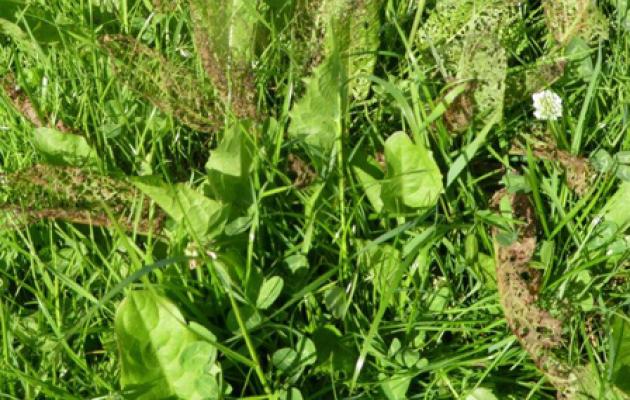
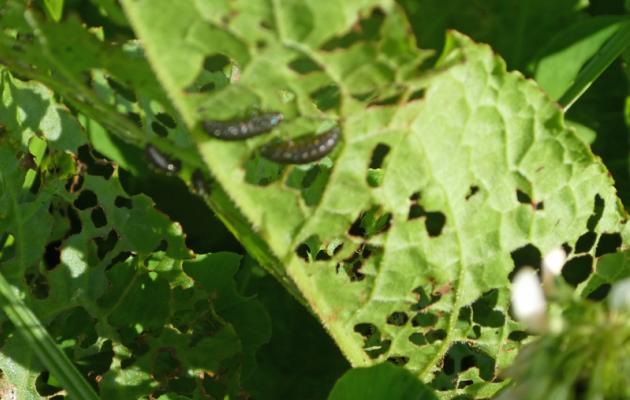
What We’ve Learned
It takes a long, long time to transform complex systems, and there are lots of obstacles along the way. For us, firstly, there was our mindset. We used to ‘fix’ the bad outcomes of intensifying farming practices with sticking plaster solutions – such as, more fertiliser, more herbicides, more drenches, more anti-biotic.
Working with nature meant we had to avoid getting those bad outcomes in the first place. The use of these toxic fertilisers and chemicals had done a lot of damage to the life of our soils and once we stopped using them, it took several years for that life to return and our crop yields to recover. Then there was the lack of clear guidance on how to farm this way. A few had gone before us but the guide book was still being written and we made mistakes.
Rather than just following an agri-chem recipe, we had to understand what was going on in our soils, our crops and our animals and work with these systems of nature as best we could.
At this time we were also trying to do the right thing with regard to our greenhouse gas emissions. It was all part of that ‘sustainable’ package that we were trying to develop. We stopped all ploughing as this was very damaging to soil life and released a lot of CO2 from the soil. The use of fertilisers, herbicides and nearly all insecticides was also very damaging to soil and plant life. Stopping their use has seen the plant and insect diversity in all our fields increase very noticeably.
Building a micro anaerobic digester was a real winner. It captures the methane from the cattle and crop waste and converts it into energy for use on the farm. That digester process also turns the smelly and polluting raw slurry into an environmentally friendly, smell-free, enhanced fertiliser (liquid compost). Every farm should have one!
The main thing we’ve learned is that net zero food production can be done viably, profitably, and at scale. This way of farming can feed the world sustainably. We are a 100% forage fed farm. We are a 100% grass farm and don’t buy in any cereals, soya or anything other than a little dried lucerne in a pellet. The intensive dairy farms will buy in around 3½ tonnes of cereals/soya/etc. to produce each tonne of dry food value milk. So net, they are extracting around 2 tonnes of food from the global food system per tonne produced. The intensive approach doesn’t sound like a good plan to me, as far as ‘feeding the world’ goes.
Governments and policy makers need to incentivise farming system transformation immediately. They need to listen to and draw on the experience of those who have already done it, and this needs to happen today.
Controlling global warming through regenerative practices is something we can all wholeheartedly support and, indeed, participate in. Halt deforestation, stop cereal/soya-based intensive livestock farming, re-build forests/woodlands, plant cover crops on arable land, encourage agroecological and agroforestry farming systems, green urban areas and so on. It reverses global warming, re-builds biodiversity, creates meaningful jobs, reduces pollution and anti-biotic resistance and, most importantly, is real, nature-based and achievable.
It took us 10 years to change our farming system, because the transformation of complex systems takes time. Every day we lose through inaction takes us a step closer to the tipping point of irreversible climate catastrophe and biodiversity collapse. It’s not too late if we harness natural systems by acting regeneratively now.
